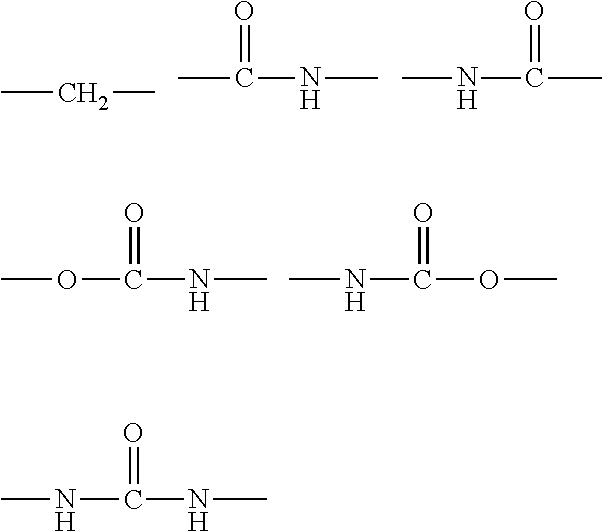Compositions for infiltration and/or sealing of hard tooth tissue and corresponding methods
a technology of hard tooth tissue and compositions, which is applied in the direction of impression caps, teeth capping, diagnostic recording/measuring, etc., can solve the problems of occlusal caries diagnostic difficulty, difficult to reliably diagnose occlusal caries, and enormous clinical challenge of correct diagnosis for dentists
- Summary
- Abstract
- Description
- Claims
- Application Information
AI Technical Summary
Benefits of technology
Problems solved by technology
Method used
Image
Examples
examples
[0488]Method 1: Determination of the Average Particle Size and the Polydispersity of Filler Particles.
[0489]The average (hydrodynamic) particle size of filler particles and their polydispersity is determined for the purposes of the present invention in the conventional manner by means of dynamic light scattering (DLS).
[0490]The determination of the average particle size in this context is preferably carried out with the “Partikelsizer ALV-HPPS” apparatus from ALV-Laser Vertriebsgesellschaft mbH, Langen. The measurement is performed with a laser having a wavelength of 632.8 nm. The samples are measured at 25° C. in quartz glass cells with a layer thickness of 10 mm. Isopropanol dried over sodium and freshly distilled is used as the solvent. In this context, the intensity of the scattered light is recorded in relation to the intensity of the primary beam at 13 angles in 10° steps in a range of from 30° to 150°. The software “ALV HPPS 5” is employed for evaluation of the dynamic light ...
synthesis example
Synthesis of bis(methacryloyloxymethyl)tricyclo[5.2.1.02,6]decane (Monomer According to Component (b1))
[0518]0.95 g (4.84 mmol) of 3(4),8(9)-bis(hydroxymethyl)tricyclo[5.2.1.02,6]decane were dissolved in 10 ml of toluene, and 0.04 g of BHT and 0.103 g of the catalyst solution were added. 3.00 g (19.34 mmol, 4 equivalents) of isocyanatoethyl methacrylate, dissolved in 10 ml of toluene, were added dropwise, while stirring. When the addition had ended, the dropping funnel was exchanged for a reflux condenser and the reaction mixture was heated to 120° C. and the progress of the reaction was monitored by means of IR spectroscopy. After 72 hours, a further 0.102 g of catalyst solution was added and the mixture was heated further until the isocyanate band was no longer detected. The solvent was removed on a rotary evaporator. The allophanate of the formula (2) was obtained in a yield of 3.83 g (4.69 mmol, 97%) as a slightly yellowish oil.
example 1
General Instructions for the Preparation of a Composition According to the Invention which can be Polymerized by Means of Free Radicals
[0519]1.1 Preparation of Silica Particles Surface-Modified by Means of Organic Structural Elements:
[0520]A colloidal dispersion of inorganic filler particles of suitable average particle size prepared by wet chemistry is provided, an organic, water-soluble matrix, for example isopropanol, being employed as the dispersing agent.
[0521]The dispersion is mixed with[0522](a) a sufficient amount of a surface-modifying agent which has on the one hand alkoxysilane groups and on the other hand organic group which can be reacted, to form covalent bonds, with monomers which can be polymerized by means of free radicals (such a surface-modifying agent is e.g. 3-methacryloyloxypropyl-trialkoxysilane),[0523](b) two to ten times the molar amount of water, based on the surface-modifying agent, and[0524](c) approx. 1 wt. %, based on the surface-modifying agent, of met...
PUM
| Property | Measurement | Unit |
|---|---|---|
| Length | aaaaa | aaaaa |
| Fraction | aaaaa | aaaaa |
| Time | aaaaa | aaaaa |
Abstract
Description
Claims
Application Information
 Login to View More
Login to View More - R&D
- Intellectual Property
- Life Sciences
- Materials
- Tech Scout
- Unparalleled Data Quality
- Higher Quality Content
- 60% Fewer Hallucinations
Browse by: Latest US Patents, China's latest patents, Technical Efficacy Thesaurus, Application Domain, Technology Topic, Popular Technical Reports.
© 2025 PatSnap. All rights reserved.Legal|Privacy policy|Modern Slavery Act Transparency Statement|Sitemap|About US| Contact US: help@patsnap.com



